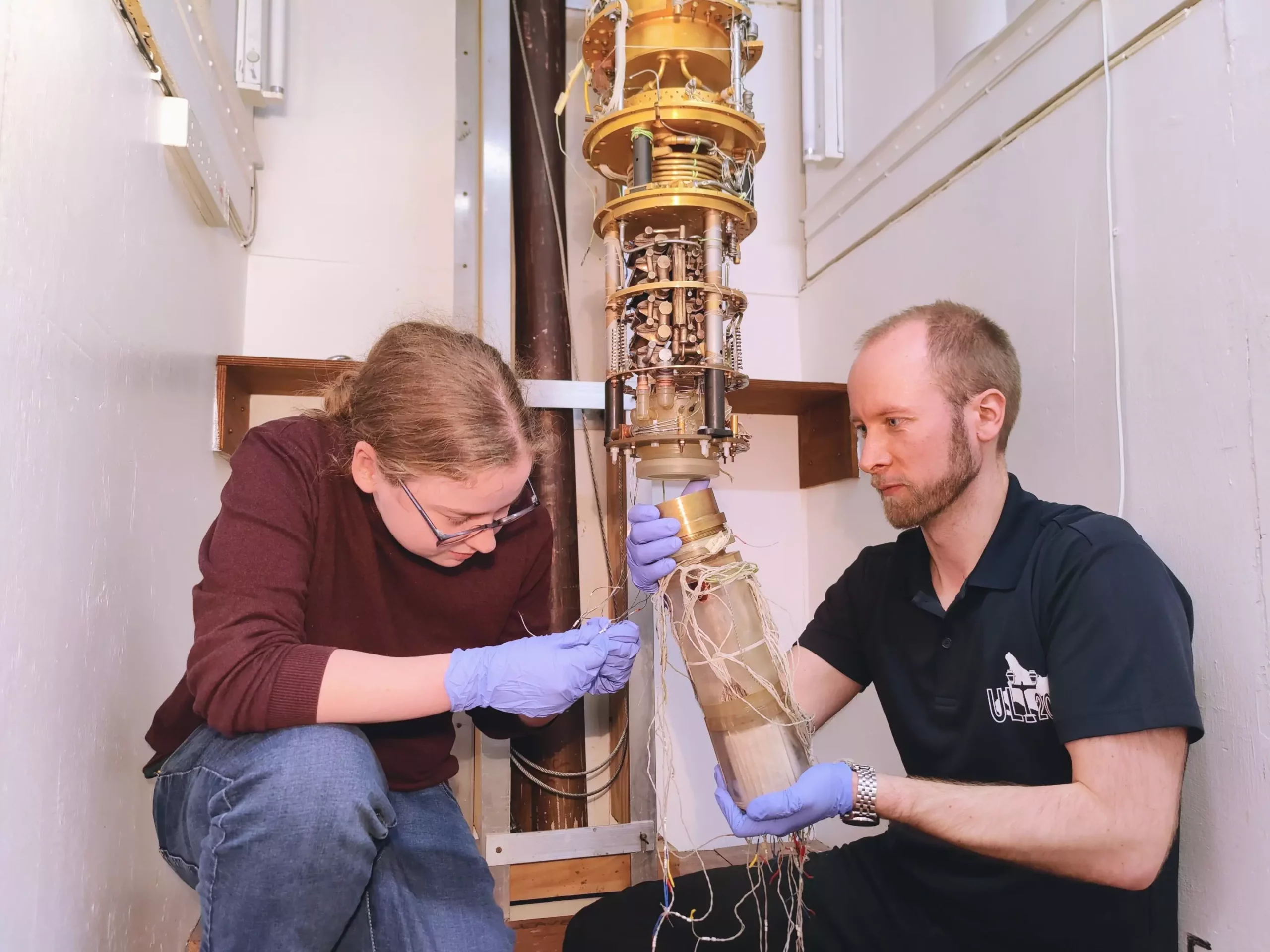Dark matter has long been a perplexing enigma in the world of science. It constitutes approximately 80% of the matter in the universe, yet it remains invisible to the naked eye. Despite its unseen nature, the effects of dark matter’s gravity are evident in the movement of celestial bodies. Countless particles of dark matter are believed to be passing through us at any given moment, but detecting them has proven to be a formidable challenge.
In an effort to unravel the mystery of dark matter, scientists from Lancaster University, the University of Oxford, and Royal Holloway, University of London have embarked on a groundbreaking mission. By harnessing the power of advanced quantum technologies, they are developing the most sensitive dark matter detectors known to date. Their innovative efforts are being showcased at the Royal Society’s flagship Summer Science Exhibition, offering a glimpse into the fascinating realm of dark matter research.
Dr. Michael Thompson, Professor Edward Laird, Dr. Dmitry Zmeev, and Dr. Samuli Autti from Lancaster, along with Professor Jocelyn Monroe from Oxford and Professor Andrew Casey from RHUL, form a team of experts dedicated to pushing the boundaries of scientific discovery. Through the utilization of quantum technologies at ultra-low temperatures, they aim to directly observe dark matter in laboratory settings. This ambitious endeavor represents a significant leap forward in our quest to unravel the mysteries of the universe.
Current particle physics theories propose two potential candidates for dark matter: elusive particles with ultra-weak interactions and incredibly light wave-like particles known as axions. The research team is developing two distinct experiments to search for each of these candidates. New particles with ultra-weak interactions could potentially be detected through collisions with ordinary matter, shedding light on the elusive nature of dark matter.
Unveiling the Unseeable
Visitors to the Summer Science Exhibition will have the opportunity to engage with interactive exhibits that offer unique insights into the world of dark matter. From observing the unseen angular momentum through a gyroscope-in-a-box to exploring the transparency of invisible masses using glass marbles in liquid, attendees will embark on a journey of discovery. The demonstration of ultra-low temperatures with a light-up dilution refrigerator and a model dark matter particle collision detector will allow participants to visualize the intricate workings of dark matter detection.
The Quantum Sensors for the Hidden Sector (QSHS) team is pioneering the development of a new class of quantum amplifiers tailored specifically for detecting axion signals. These amplifiers operate at the highest precision permitted by quantum mechanics, enabling scientists to explore the realm of axions with unparalleled accuracy. By harnessing the principles of quantum mechanics, researchers are delving into uncharted territories and pushing the boundaries of scientific knowledge.
Through a combination of cutting-edge technology, innovative experiments, and a deep-seated curiosity about the universe, scientists are inching closer to unlocking the secrets of dark matter. The quest for understanding the invisible universe is not merely a scientific endeavor but a testament to human ingenuity and the insatiable thirst for knowledge that drives us forward. As we stand on the brink of a new era of discovery, the mysteries of dark matter beckon us to explore, question, and ultimately unveil the hidden truths that lie beyond our reach.


Leave a Reply